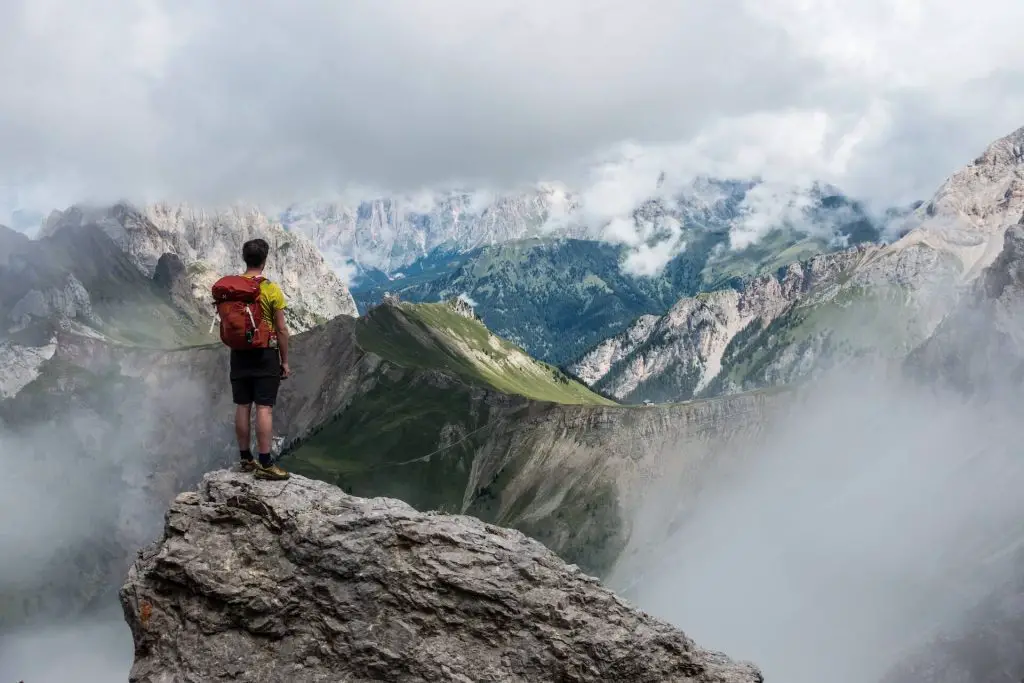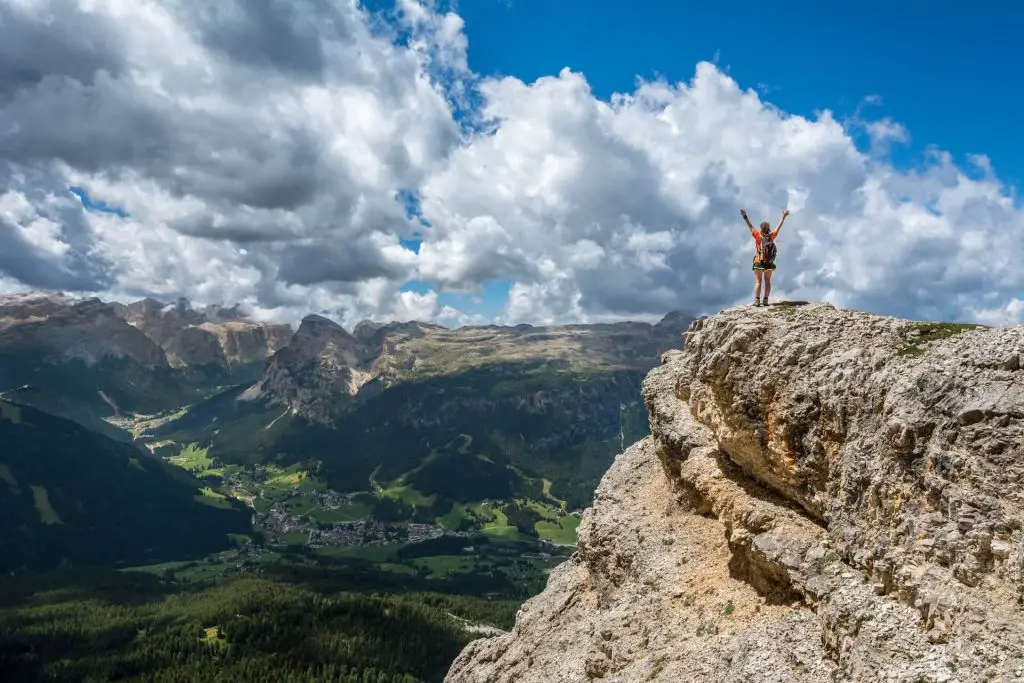
You are probably researching a 15 mile hike and wondering how long it will take. There are probably so many factors to consider and thoughts racing through your mind, but you will be able to estimate how long your upcoming hike will take. So, how long does hiking 15 miles take?
Depending on fitness level, the average hiker can hike between two to three miles per hour and if you account for an additional fifteen minutes for every 500 feet of elevation gain, it would take roughly 7 and a half hours to hike 15 miles.
Being able to estimate how long your hikes take is a crucial skill for safe planning. It will help you estimate your start and end times so you can give others your hiking timeline. You also will be able to account for planning for enough daylight. While we gave you a general estimate on how long it takes to hike 15 miles, there are a few other factors you should also be mindful of that can impact your hiking times. We will also cover strategies to help you maintain a good hiking pace over the duration of your long hike.
External Factors that Can Slow You Down
Trail Conditions
One of the many external factors that can slow your hike down is trail conditions. You might be picturing a clear trail, but reality might be a debris and mud covered trail that stops you in your tracts. Finding out what trail conditions are is very important in accurately estimating your hike time. I’ve been on four mile hikes I thought would only take two hours, but ended up taking almost double that because there was muddy trail conditions and fallen trees blocking the path.
There are three ways you can check trail conditions. The first way you can check trail conditions is to read recent reviews of trails on alltrails.com. Here you can get feedback from other hikers to see if there is anything you need to watch out for and how the trail is. There are also photos on there so you can see certain sections of the trail. Another avenue to check trail conditions is to check Instagram hashtags and tagged locations for your upcoming hike. You can usually see videos and photos of the trail to get a general gauge of trail conditions. The third way you can get trail conditions is to call the local ranger and get updated trail condition information.
Altitude
If you are planning to hike at high altitude or anywhere that is over 8,000 feet. Hiking at or towards high altitude can slow you down drastically as your body feels like its not getting enough oxygen. Each step you take requires a lot of energy and each breath can be labored if your body doesn’t properly acclimate and adjust. Unfortunately you won’t know how your body reacts until you are there, but if you have the luxury to spend a day or two at a similar altitude before your hike it can go a long way in feeling great and minimizing the impacts of altitude.
When you account for altitude on your hike you should also see which sections experience the most altitude gain and which sections are at the highest elevation. You might think the last mile will only take you thirty minutes, but if you are over 10,000 feet you could take an hour. On one of my high altitude hiking trips, the last mile on Mount Whitney was over 14,000 feet and took me more than two hours as I had to pace myself and make my way towards the summit. The more bigger mountain hikes you go on, the better gauge you will have on how your body reacts to higher altitudes.
Elevation
The third factor to watch out for on any hike is elevation gain. Elevation gain can slow you down tremendously. The steeper sections require much more exertion and energy from your legs. Hiking a flat seven mile hike is much easier than a steep two mile hike with over 1,000 feet of elevation gain. Even if your hike starts at sea level, you could do an elevation gain of 2,000 feet during a strenuous hike.
While researching hikes you can note the difficulty rating. This rating is in relation to how much elevation gain there is on a hike. Easy hikes are flat, moderate hikes have mild elevation gain below 1,000 feet, and strenuous hikes have more than 1,000 feet of elevation gain. Once you have the elevation gain noted, you can look at topographic maps and see which areas are the steepest so you can better plan your hike. Having this information will allow you to strategically plan your breaks. You can plan breaks before the toughest portions of the trail so that your legs are rested, you are hydrated, and your morale is boosted. This will help you tackle the challenging portions and help you maintain a good hiking pace.
Fitness

The largest determining factor on how fast you can hike and what can slow you down the most is your own fitness. Whether you are just starting to hike or getting back on the trail, if you’re doing estimates on your hikes its always better to be more conservative in your estimates. If you think you are just getting back in the swing of things then its better to estimate hiking 1.5 miles to 2 miles an hour.
Even after hiking for years and being in hiking shape I typically always estimate hiking at 2 miles an hour. Being conservative in your estimates will give you buffer for your planning in case certain sections take longer or something unexpected occurs on your hike. When I started hiking I felt so slow, but the more hikes I went on I was able to eventually find a good grove and pace. You too will be able to find your stride and be able to see what your hiking pace [is.](http://is.As) As you are hiking make sure to take small sips of water throughout your hike to help keep your body properly hydrated. This will go a long way during a long hike so that you don’t get too in the zone and completely forget to drink water.
Weather
Another factor that can slow down your hike is weather. First you should check to see the weather forecast and see if there is rain, snow, or high heat. Those three scenarios can cause for very rough days. Rain and snow can slow you down as the trail will be slippery. High heat can zap your energy and slow your pace down drastically.
For a long hike its recommended to start earlier in the day so you can hike during cooler temperatures. You should also hike early so that you have more hours of daylight. Since this hike will take at least 7 hours, you need to start early so you have a buffer on daylight. Another way weather impacts your pace is if the weather has eroded the trail or created unfavorable trail conditions. Be sure to bring rain gear so that you can be prepared for unexpected rain on your long hike.
Final Thoughts
Hiking fifteen miles is a tough and physically demanding journey. However preparing and properly planning for this hike will increase the odds of your success. Accounting for the trail conditions, elevation, altitude, and your own fitness level will give you a more accurate estimate of your hike time. The ability to closely estimate your hiking time will make things much safer and more strategic so you can increase the odds of completing the full fifteen miles.
Hiking long trails comes with many challenges, but with planning the small things and accounting for external factors you will be able to enjoy your hike and have a good pace. Being mindful of your hydration levels and energy levels is important on such a long journey. Taking small sips and snacking throughout your hike will ensure you have the energy to accomplish such a long hike. Enjoy your fifteen mile hike!
